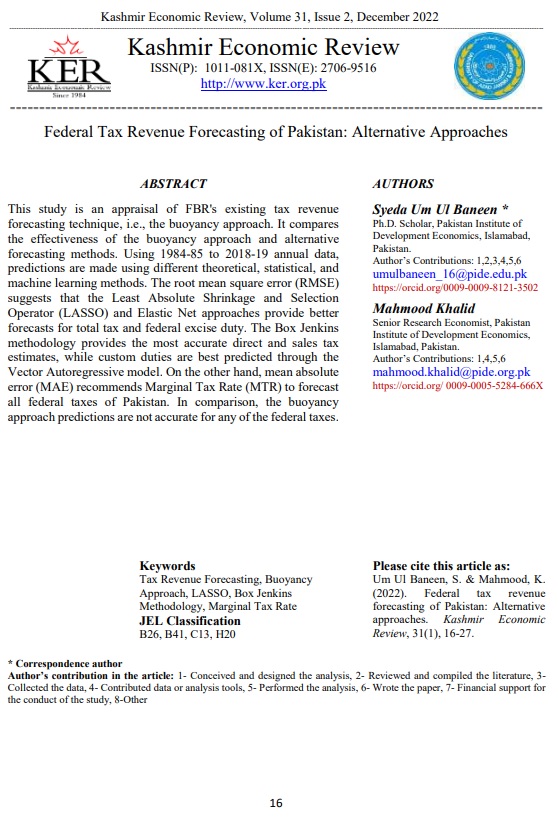Federal Tax Revenue Forecasting of Pakistan: Alternative Approaches
محتوى المقالة الرئيسي
الملخص
This study is an appraisal of FBR's existing tax revenue forecasting technique, i.e., the buoyancy approach. It compares the effectiveness of the buoyancy approach and alternative forecasting methods. Using 1984-85 to 2018-19 annual data, predictions are made using different theoretical, statistical, and machine learning methods. The root mean square error (RMSE) suggests that the Least Absolute Shrinkage and Selection Operator (LASSO) and Elastic Net approaches provide better forecasts for total tax and federal excise duty. The Box Jenkins methodology provides the most accurate direct and sales tax estimates, while custom duties are best predicted through the Vector Autoregressive model. On the other hand, mean absolute error (MAE) recommends Marginal Tax Rate (MTR) to forecast all federal taxes of Pakistan. In comparison, the buoyancy approach predictions are not accurate for any of the federal taxes.
تفاصيل المقالة

هذا العمل مرخص بموجب Creative Commons Attribution-ShareAlike 4.0 International License.

